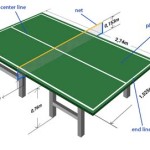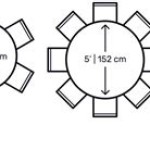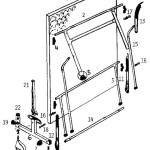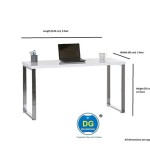Rustic Barn Wood Dining Room Table: A Timeless Centerpiece
The rustic barn wood dining room table has emerged as a highly sought-after piece of furniture, offering a unique blend of history, character, and durability. This article will explore the various aspects of these tables, including their construction, aesthetic appeal, and suitability for different dining room styles. It will also delve into the considerations necessary when selecting and maintaining a barn wood dining table, ensuring it remains a cherished part of the home for years to come.
Understanding the Appeal of Barn Wood
The allure of barn wood stems from its inherent story. Each plank carries the marks of time, weathered by the elements and bearing witness to years of agricultural activity. The imperfections, such as nail holes, knots, and variations in color and grain, are not flaws but rather the very essence of its rustic charm. This distressed aesthetic provides a stark contrast to the uniformity of mass-produced furniture, appealing to those who appreciate individuality and authenticity.
Barn wood typically originates from dismantled barns and other agricultural structures. The wood is often sourced from older growth trees, resulting in a denser and more stable material compared to modern timber. This inherent strength contributes to the longevity of barn wood furniture. The types of wood commonly used include pine, oak, and maple, each offering its own unique characteristics in terms of color, grain pattern, and hardness. The specific type of wood used in a barn wood dining table can significantly influence its overall appearance and durability.
The environmental considerations associated with using reclaimed barn wood are also significant. By repurposing existing materials, these tables contribute to sustainable practices by reducing the demand for newly harvested timber. This makes barn wood dining tables an appealing choice for environmentally conscious consumers.
Key Design and Construction Considerations
Barn wood dining tables are available in a wide range of designs, from simple and minimalist styles to more elaborate and ornate pieces. The design often dictates the functionality and suitability of the table for different dining spaces. Understanding the various construction techniques and design elements is crucial for selecting a table that meets specific needs and preferences.
One of the most common designs involves using solid barn wood planks for the tabletop, supported by a base constructed from either barn wood or other materials such as metal or wood. The tabletop can be left with a rough, unfinished surface to further enhance the rustic aesthetic, or it can be smoothed and sealed for a more refined look. The choice depends on the desired level of formality and the intended use of the table.
The base of the table plays a critical role in its stability and overall appearance. Options include traditional trestle bases, pedestal bases, and more modern metal legs. Trestle bases typically provide excellent stability and are well-suited for larger tables. Pedestal bases offer a clean and contemporary look, while metal legs can add an industrial touch. The selection of the base material and design should complement the tabletop and the overall style of the dining room.
The size and shape of the table are also important considerations. Rectangular tables are a classic choice and are suitable for a variety of dining spaces. Round tables promote conversation and are ideal for smaller rooms. Oval tables offer a combination of both, providing ample seating while still fostering a sense of intimacy. Determining the appropriate size and shape of the table requires careful consideration of the available space and the intended number of diners.
Integration into Different Dining Room Styles
The versatility of barn wood dining tables allows them to be seamlessly integrated into a variety of dining room styles, from traditional to contemporary. Understanding how to effectively incorporate a barn wood table into a specific design aesthetic is essential for creating a cohesive and visually appealing space.
In a traditional dining room, a barn wood table can serve as a focal point, adding warmth and character to the space. Pairing the table with classic dining chairs, such as Windsor or Chippendale styles, can create a balanced and elegant look. Incorporating other rustic elements, such as exposed brick or stone accents, can further enhance the traditional aesthetic.
For a more contemporary dining room, a barn wood table can provide a welcome contrast to sleek and modern furnishings. Combining the table with minimalist chairs, such as Eames or Scandinavian designs, can create a striking and visually interesting juxtaposition. Adding metal accents, such as pendant lights or decorative accessories, can further enhance the contemporary feel.
In a farmhouse-style dining room, a barn wood table is a natural fit. Pairing the table with distressed paint finishes, vintage accessories, and natural textures can create a cozy and inviting atmosphere. Incorporating elements such as woven baskets, linen tablecloths, and earthenware pottery can further enhance the farmhouse aesthetic.
The key to successfully integrating a barn wood table into any dining room style is to create a balanced and cohesive look. This involves carefully considering the color palette, textures, and overall design aesthetic of the space, ensuring that the table complements and enhances the existing elements.
Maintenance and Care for Longevity
Proper maintenance and care are essential for preserving the beauty and longevity of a barn wood dining table. Understanding the specific requirements of the wood and finish is crucial for preventing damage and ensuring that the table remains a cherished heirloom for generations to come.
Regular cleaning is essential for removing dust and debris. A soft, damp cloth is typically sufficient for cleaning the surface of the table. Avoid using harsh chemicals or abrasive cleaners, as these can damage the finish. For spills, it is important to blot them up immediately to prevent staining.
Protecting the table from heat and moisture is also crucial. Using coasters and placemats can help to prevent damage from hot dishes and condensation. Avoid placing the table in direct sunlight, as this can cause the wood to fade or crack. Maintaining a stable humidity level in the room can also help to prevent warping or cracking.
Depending on the finish, periodic maintenance may be required to maintain the appearance of the table. For example, tables with a waxed finish may need to be re-waxed periodically to maintain their luster. Tables with a varnished finish may need to be recoated after several years to protect the wood from wear and tear.
Addressing scratches and other minor damage promptly can help to prevent them from becoming more severe. Small scratches can often be repaired with touch-up markers or furniture polish. More significant damage may require professional repair.
By following these maintenance and care guidelines, owners can ensure that their barn wood dining table remains a beautiful and functional piece of furniture for many years to come. The unique character and inherent durability of barn wood make it a worthwhile investment, provided that proper care is taken to preserve its natural beauty.

Reclaimed Barnwood Table Multiple Sizes Available Back At The Ranch Furniture

Custom Reclaimed Barnwood Dining Tables For

Barn Wood Dining Tables Raised In A Furniture

Hand Made Custom Built Reclaimed Barn Wood Dinning Room Table And Chairs By S Custommade Com

Love This Huge Barnwood Table Wood Dining Room Living

Reclaimed 100 Year Old Barnwood Rustic Farmhouse Trestle Barn Wood Dining Table Tables

Choosing The Perfect Reclaimed Wood Dining Table

Reclaimed Oak Barnwood Table From Dutchcrafters Amish Furniture

Plank Farm Table Breadboard Ends Dutchcrafters Dining Tables

Elegant Barn Wood Table








